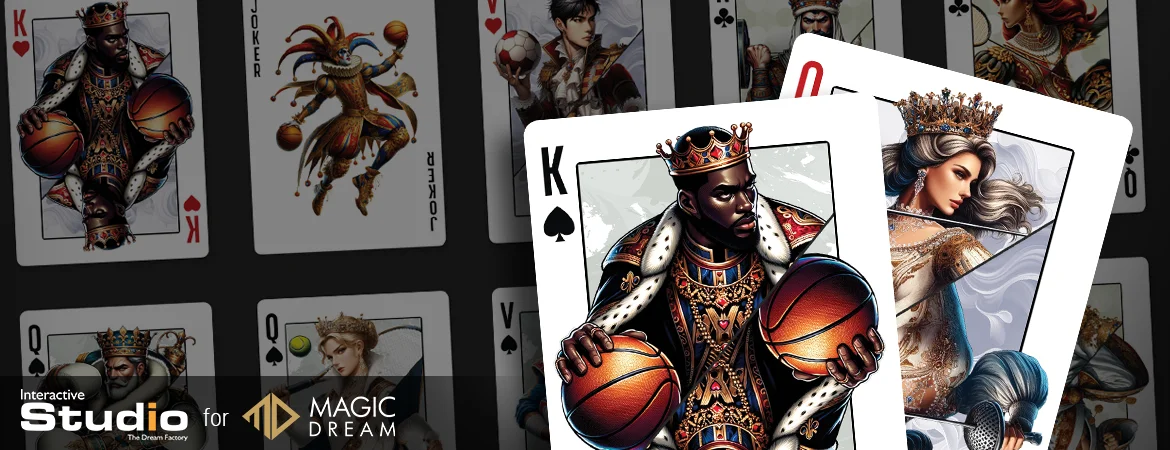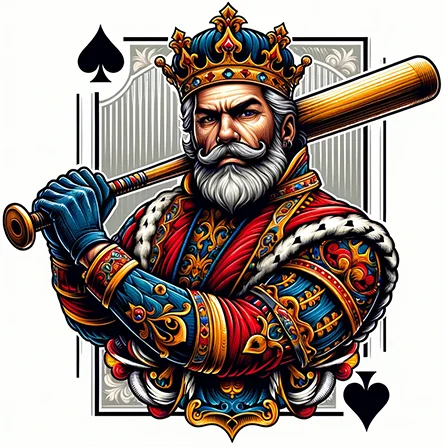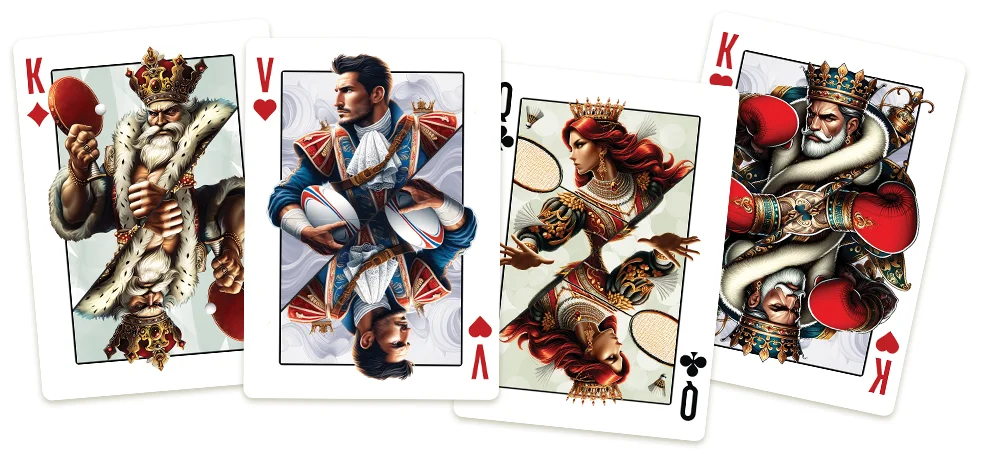
Creating a sports-themed card game using Artificial Intelligence
For this project, we were commissioned by Magic Dream to create a sports-themed playing card game using AI. Each card had to be unique but all the cards had to have the same graphic style.
Introduction to the Design Process
Designing a sports-themed card game is an intricate process that combines creativity with strategic thinking. The goal is to create a game that captures the excitement and competitive spirit of sports while being visually appealing and engaging to play.
Leveraging advanced tools like DALL-E and MidJourney, which are powerful AI-driven platforms for generating images, can significantly enhance the design process.
These tools allow for the creation of unique and dynamic artwork that aligns perfectly with the game’s theme, making each card a vivid representation of the sport it embodies.

Conceptualizing each card
The first step in designing a playing card game is to conceptualize each card. In a sports-themed game, this involves determining the various elements that will be featured on the cards. The conceptual phase is crucial as it sets the foundation for the visual and functional aspects of the game.

Using AI to generate visual content
Once the concept for each card is established, the next step is to bring these concepts to life visually. This is where AI tools like DALL-E and MidJourney come into play. These platforms use deep learning algorithms to generate high-quality images based on text prompts. For example, if a card represents a legendary basketball player, a prompt could be entered into DALL-E or MidJourney describing the player’s pose, the intensity of the moment, and the stadium backdrop. The AI then produces an image that captures these elements in a visually stunning way.
These AI-generated images are not just generic representations; they are tailored to the specific needs of the game. Designers can fine-tune the prompts to ensure that the artwork aligns with the game’s aesthetic, whether that means focusing on realism, a particular artistic style, or dynamic action scenes.
The flexibility of AI tools allows for rapid iteration, enabling designers to experiment with different visual styles and select the ones that best fit the game’s overall theme.